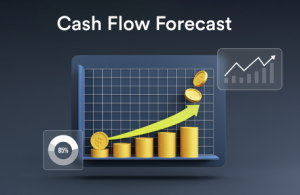Comparing results of different periods of unique importance in finance and business performance analysis. It enables companies, investors, and analysts to surface trends, measure progress, and make informed decisions. Multiple financial metrics can be used for this purpose, but among them, Year-over-year (YOY) analysis is one of the best and simplest tools to use. YOY comparison will help dramatically with your financial evaluations, whether you are analysing a company’s revenue, profit margins, customer growth or expenses.
In this blog post, we will look into what is YOY in finance, how it is calculated, and why it is crucial when evaluating performance.
What is YOY in Finance?
Year Over Year (YOY) is typically used to compare elements with the same time frames [a period] of two appropriate [similar] periods [normally the same for the previous year]. YoY refers to a way of comparing two or more measurable events in 12 months. For instance, if a firm made $2 million in Q1 2024 and $2.4 million in Q1 2025, the revenue increased by 20% YOY.
So, what does YOY mean in finance? This gets us long-term performance data, removing aberrations due to short-term seasonality and letting us more easily grasp long-term trends and growth. It provides a metric for stakeholders to evaluate whether a company’s financial stability is increasing or worsening.
What Is the YOY Comparison? YOY Comparison Significance
Financial statements are filled with lines of data that vary month to month or from quarter to quarter based on a multitude of seasonal, operational, or even one-time events. A YOY comparison takes the noise out of the equation, looking exclusively at how the output is expanding or contracting on a year-over-year basis and, therefore, allowing for more emphasis on identifying meaningful trends.
Why Year Over Year ( YoY ) analysis is extremely important
Spotting Growth or Decline: The performance of a single month or quarter may not be enough to determine the health of a business. By comparing the same date range across two years, companies can understand whether they’re growing, flat, or declining.
This process is known as seasonally adjusting the data: Many industries have predictable seasonal variations. For a retailer whose holiday sales surge, comparing December with November is of little relevance. However, comparing December 2025 with December 2024 eliminates seasonality and shows real progress.
Satisfying Investors and Analysts → Analysts often utilise YOY comparison for stock performance; they look for increases in revenues or changes in operational efficiency. It’s a standard metric that lends credibility to reports.
Improved Forecasting and Budgeting: Identifying trends from past performance enables organisations to create achievable targets for future enforcement periods.
Read More: Discounted Cash Flow Analysis
How to Calculate YOY
We now know the relevance of Year Over Year, so let’s get on to the formula itself. If you’re asking how to calculate YOY, it’s pretty simple:
There are a couple of formulas to find out the Year-on-Year growth:
YOY Growth (%) = [(Value of Current Year-Value of Previous Year)/Value of Previous Year]* 100
So let me explain this with an example:
For example, if a company had revenue of $1,000,000 in March 2024 and revenue of $1,200,000 in March 2025.
YOY Growth = (Current Period – Previous Period) / Previous Period] x 100 = (1,200,000 – 1,000,000) / 1,000,000] x 100 = 20%
That implies that the company’s revenue grew 20% YoY.
You can use this formula for any metric — profit, expense, customers, website traffic, number of units sold, etc. The formula is also very powerful and versatile; it is the cornerstone of financial analysis.
Practical Scenario for YOY Calculation
Year-on-year (YOY) calculation is not confined to company revenue figures. It is applied within multiple financial metrics and multiple industries to help make optimum decisions. Here are some of its notable applications:
Revenue Growth Tracking
This is why businesses conduct YOY comparisons quarter-wise or annually to evaluate how the market is performing. It allows CEOs and CFOs to spot where segments are growing or falling behind.
Investment Decisions
With year-over-year earnings or sales growth, stock analysts and investors will create buy or sell decisions. Most of the time, a company that keeps producing good YOY results is seen as a good business.
Cost Control
Similar to revenue, costs can be done Year Over Year. For example, a company may compare its marketing or operational costs over time against the prior year in order to uncover inefficiencies or discover opportunities to optimise its resources.
Economic Indicators
Governments and economists utilise YOY comparison to evaluate major metrics, including inflation, GDP, work rates, and industrial manufacturing. For example, “inflation rose 3.2% YOY” means prices are 3.2% higher than the same month last year.
Retail Analytics and E-commerce
For example, retailers may measure YOY growth in online traffic, cart conversion rates, or average order value. This shall help them to get an insight if the marketing efforts are yielding results or if the customer behaviour is changing.
Why use year-over-year analysis?
- Simplicity
The biggest benefit of YOY calculation is its relative ease. It is easily computed and understood by anyone and hence is available to all risk participants, including small business owners, financial advisors, and corporate managers.
- Long-Term Perspective
Metrics in the short term can be misleading. A good month does not always mean the business is on course. The annual assessment gives a larger, deeper perspective.
- Standardisation
YOY comparison is a common practice, so it is also easier to benchmark against other companies, sectors, or even countries.
Limitations of YOY Comparison
While it has its merits, Year Over Year analysis has some disadvantages:
- Doesn’t Reflect Seasonality Within the Year
YOY takes out year-to-year seasonality but does not adjust for variability within the year. For example, say a company had a short-term problem one month that led to a decrease in the performance — that already implies a skew in the YOY trend.
- Doesn’t Show Month-to-Month Variations
Sometimes, you have to look at month after month to know when a situation is flickering and changing fast. YOY may be too blunt and miss those movements.
- Not Suitable for Startups or Rapidly Evolving Markets
For high-growth or volatile industries, dramatic swings might make YOY comparison insufficient to determine long-term trends, its proponents say, particularly for early-stage startups and even late-stage companies.
How to Use YOY in Business Strategy Effectively
However, to get the most out of year-over-year metrics, companies should use them alongside other monetary tools. Here’s how:
Combine YOY calculation with quarter-over-quarter and month-over-month data to have a holistic view of performance.
Never compare periods over different accounting periods (i.e. Q2 2025 vs Q2 2024). This is especially important for seasonal businesses.
Remember: external influences (pandemics, economic implosions, large single-time purchases) must always be factored in YOY calculations.
Use dashboard automation of YOY comparison to keep track of performance without manual effort.
YOY vs Other Growth Metrics
It’s important to note YOY vs. other growth measurement methods:
- MoM: Difference in performance from one month to the next. Good for short-term monitoring but could be seasonal noise.
- QOQ (Quarter Over Quarter): Measures the change from one quarter to the next. Useful for mid-term analysis.
- Compound Annual Growth Rate (CAGR): Annualises the growth rate for a longer period. Better suited for strategic planning and valuation model
These methods have their place, but YOY calculation is still the most widely used method of understanding annual progress.
Conclusion
YOY is an important concept in finance, and professionals must understand the metric that drives informed decisions based on performance trends. Year-over-year analysis removes seasonality noise and exposes genuine trends by providing a consistent and simple method for comparing metrics across annual periods.
Whether you’re measuring revenue, expenses, website traffic, or stock performance, knowing how to calculate YOY will give you data literacy and a more strategic approach to decision-making.
So the next time you read a financial report, pay extra attention to the YOY comparison — because sometimes, just one year is all you really need to know about whether you’re heading in the right direction.



